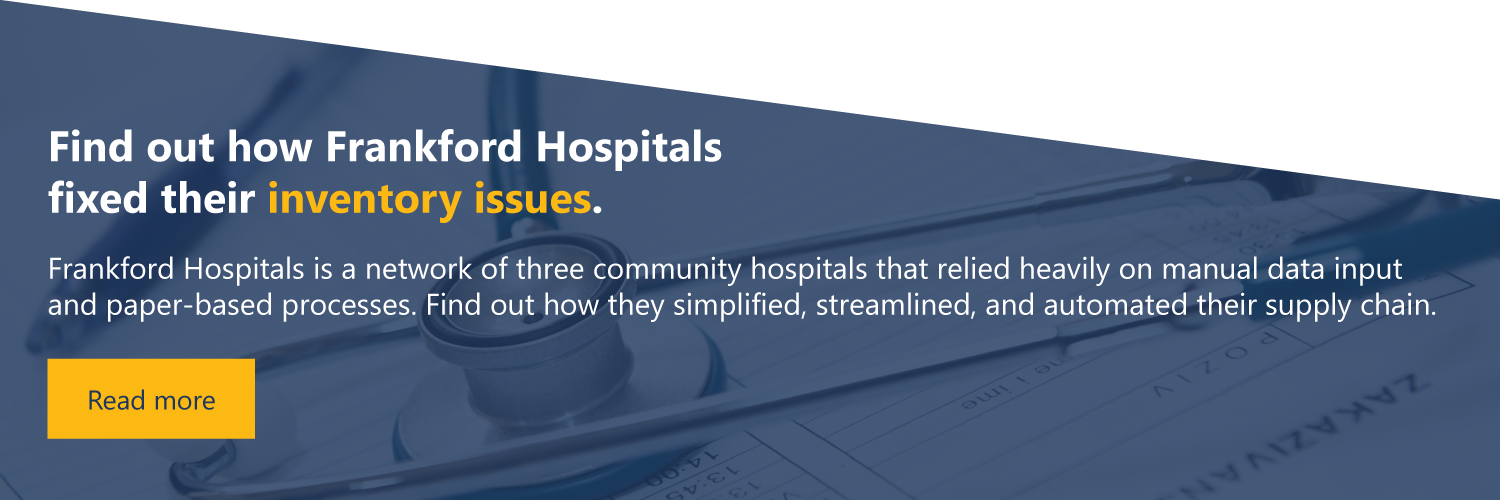Bolstering your healthcare supply chain in an economic downturn may feel like a daunting task, particularly when the spread of COVID-19 accompanies that downturn. But it doesn’t have to be daunting. It’s possible to build long-term resilience into healthcare supply chains even during these uncertain times. Analysts predict that a recession is just around the corner, but the world is a very different place than it was for the last major economic crisis. This time around, it is possible to prepare by leveraging the intelligence of new technologies to weather the storm.
This recession will likely see an acceleration in the healthcare industry’s structural transformation. Strategic, adaptable healthcare facilities will survive, while those who remain mired in obsolete processes will struggle to survive. A situation that may be exacerbated by a rise in taxes as governments seek to plug the income gaps caused by shuttering companies.
It’s possible to not only survive an economic downturn but thrive in it. By investing time and money in developing agile healthcare supply chains, you should be able to bolster your organization against the worst of a recession. In this blog, we discuss how you should prepare.
1. Rethink the management of your healthcare supply chain

Managing healthcare supply chains is a tricky job at the best of times—a well-managed supply chain is the backbone of any healthy organization. It ensures that all patients receive treatment in a timely fashion and saves lives. It also ensures that you keep both costs and inventories under tight control. A healthy supply chain is behind the smooth running of all day-to-day operations.
Because recessions generally mean uncertainty, those managing supply chains will have to rethink operations, and perhaps even technologies, to strategically address issues as they arise and increase efficiency. In unforgiving economic times, managing inventory will require you to assess your current supply chain and look for ways to improve at every level. The answer is not about small cosmetic changes but digging deep to bolster your organization and investing in processes and systems that reduce your team’s guesswork.
If you are already struggling with supply chain problems, you may be interested in reading our article on diagnosing and fixing supply chain issues. You can use this blog to help diagnose the existing issues you may be dealing with and perform a full audit of supply chain performance. A complete evaluation will be the first crucial step in this journey.
2. Supplier assessment is just as crucial as self-assessment
It can be easy to turn inward in times of uncertainty, but that would be a strategic mistake when optimizing your healthcare supply chain. Carefully monitor the financial health of your suppliers. Nobody is immune to the impact of a recession, and those suppliers who fail to commit to lean operations may find themselves in trouble during an economic downturn. As someone who relies on their product, you need to switch suppliers where necessary and have a list of back-up suppliers on hand. A thorough risk assessment will be essential to survival, so keep an eye on their financial health so that you do not suffer the disruption of suppliers’ losses.
3. Collaborate closely with suppliers and keep the future in mind
One of the key parts of any supply chain is the supplier, and it’s likely that your suppliers will be negotiating with others at this time. Recessions lead to a drop in demand across the board, and so flexibility around pricing can occur that may not have been possible before the economic downturn.
Be sure to negotiate with suppliers and manufacturers to reduce costs and perhaps collaborate to ensure a constant supply of high-demand items while still reducing supply in other areas. You will have to be tactical and maximize supply while still minimizing the chance of stock-outs.
Your relationship with suppliers is not just about the next three months. Try to think ahead by at least three years and make tactical decisions based on the relationships you want to maintain and your organization’s overall costs.
4. Ensure healthcare supply chain transparency by digitalizing its management
Suppose you currently manage inventory within a basic ERP or spreadsheets. You may find it challenging to maintain a full perspective on your supply chain (particularly if you have multiple locations). To survive uncertain times, you will need to invest in digitizing supply chain management and having a centralized location that allows you to access your information in one place.
The ability to move quickly is vital in uncertain times and having clear insights can protect you by allowing you to make decisions immediately. It can often take weeks (or months) to consolidate the information you need to make significant decisions, but with the right software, it’s possible to access that information in hours.
Another benefit of investing in centralized ERP software for healthcare is the level of control it introduces. By automating processes, you reduce the number of errors in data and rest assured that the information you’re acting on is correct. You’re effectively creating a single source of truth and harnessing technology so that you can focus on strategically using the information at your fingertips to weather economic uncertainties.


